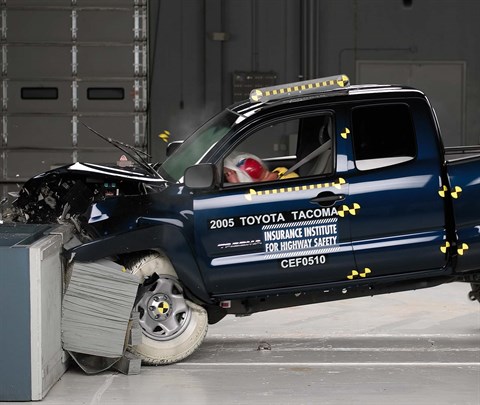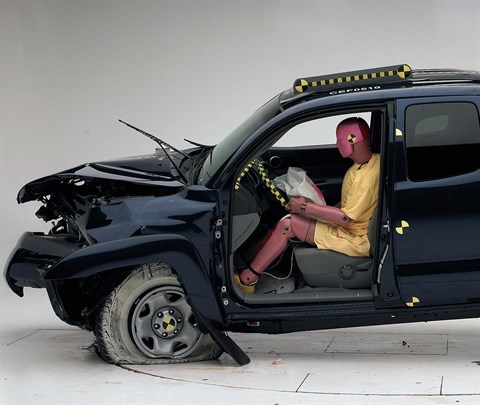Moderate overlap front: original test
Rating applies to 2005-15 models
Tested vehicle: 2006 Toyota Tacoma TRD Sport Double Cab long bed 2wd
The Toyota Tacoma was redesigned for the 2005 model year. Two tests of the Tacoma were conducted, one by the Institute of a 2005 model 2wd Access Cab and the other by Toyota of a 2006 model 2wd Double Cab. The overall rating of Good is based on review of both tests, which independently result in overall ratings of Good. The ratings and vehicle specifications based on Toyota's test are listed because the 2wd Double Cab is similar to the crew cab configuration of other pickups tested more recently.
| Evaluation criteria | Rating |
|---|---|
| Overall evaluation | |
| Structure and safety cage | |
| Driver injury measures | |
| Head/neck | |
| Chest | |
| Leg/foot, left | |
| Leg/foot, right | |
| Driver restraints and dummy kinematics | |

Action shot taken during the Institute's frontal offset crash test.

The dummy's position in relation to the steering wheel and instrument panel after the crash test indicates that the driver's survival space was maintained well (Institute test vehicle shown).

Smeared greasepaint indicates where the dummy’s head hit the roof rail and head restraint during rebound in the Institute's test. Head accelerations from these hits were low.

Intrusion into the driver's space was minimal in both tests, and all leg and foot injury measures were low.
Head restraints & seats
Seat type: Manual cloth bucket seats AHR
| Overall evaluation | |
|---|---|
| Dynamic rating | |
| Seat/head restraint geometry |
About the head restraint & seat test
Currently, IIHS tests apply only to front seats.
